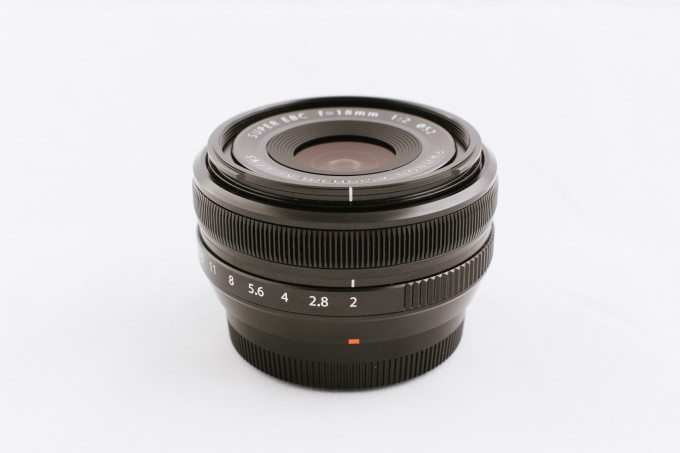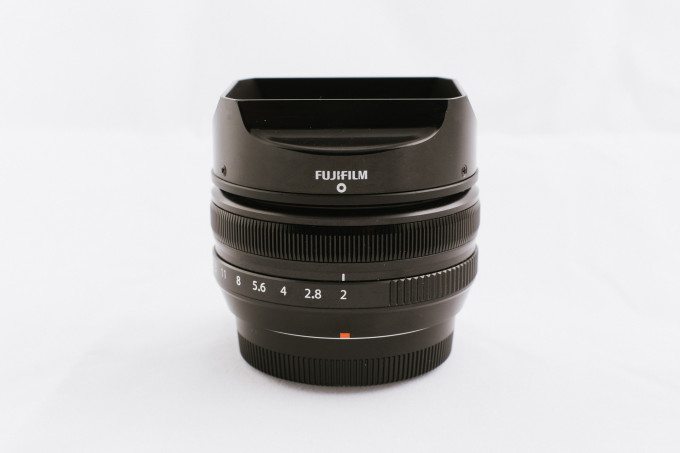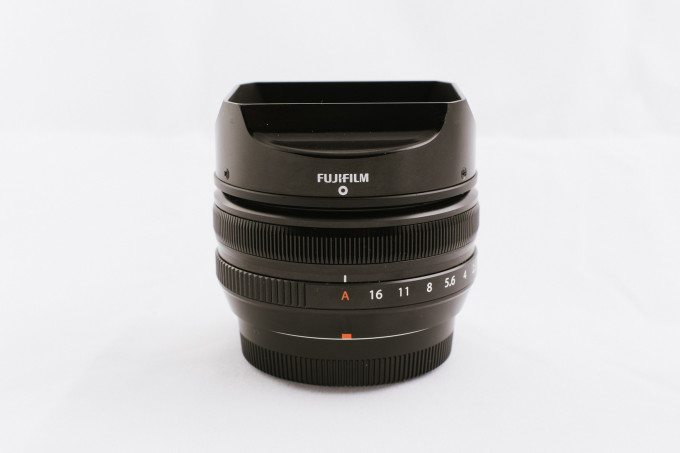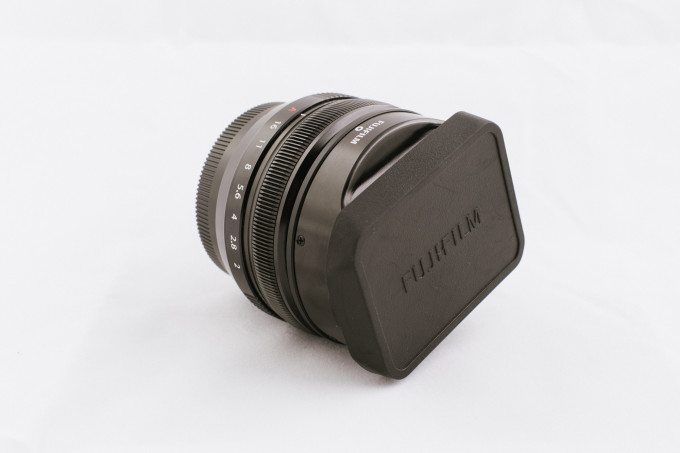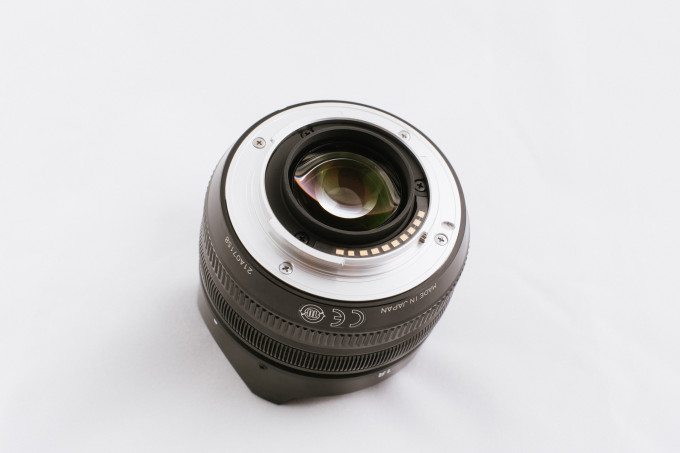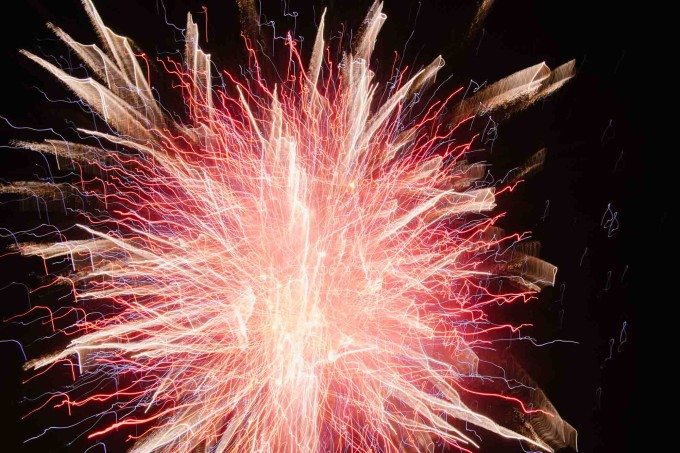The Fujifilm X-System has been something of an enigma since its initial launch in 2012. Yet another mirrorless camera system; too big for some, absolutely perfect for many. I fall squarely into the latter category with the X-Pro 1, and with all of the recent firmware updates that Fujifilm has bestowed upon us, they have taken a quirky and slightly flawed but lovable camera system and turned it into a real powerhouse. By this time, you’ve read the reviews, you understand what the X-System is about, and if you fall into the same category that I do, then you already know that it’s a wonderful camera for real photography. With this review I’m here to talk about the XF 18mm f2 lens which launched initially with the X-Pro 1. It has been continually improved through firmware updates, and I thought it was important for people to have a review of it today, vs the reviews that were shared when it initially launched. Head on past the break for my review of the XF 18mm.
Pros & Cons
Pros
- Extremely compact and lightweight
- Very quick AF (for the X-System)
- Solid and usable image quality
Cons
- Pretty noticeable Chromatic Aberration in certain situations
- Corner sharpness isn’t all that great until you get to f5.6 or greater
Gear Used
For this review I used the Fuji X-Pro 1 with the XF 18mm. That’s it.
Tech Specs
Copied from Adorama’s Product Page
| Lens type | XF18mmF2 R |
| Lens construction | 8 elements in 7 groups (includes 2 aspherical elements) |
| Focal length (35mm format equivalent) | f=18mm (27mm) |
| Angle of view | 76.5Deg. |
| Max. aperture | F/2.0 |
| Min. aperture | F16 |
| Aperture control | Number of blades: 7 (rounded diaphragm opening) Stop size: 1/3 EV (19 stops) |
| Focus range | 18cm – Infinity |
| Max. magnification | 0.14x |
| Filter size | 52mm |
| External dimensions | 64.5mm x 40.6mm (Diameter) / 2.54 x 1.60 inches |
| Weight | 116g (4.0 oz) (excluding caps and hoods) |
Ergonomics
The XF 18mm is most definitely a small lens. I would even be willing to consider it a “pancake” lens, but once you mount the lens hood, it does increase the overall size noticeably.
With the hood mounted, it does make the lens a bit larger, but I don’t find it to be “too big” in any way. Also take notice of both the ribbed focus and aperture rings. The Aperture ring has half-stop clicks which are easy to manipulate, but don’t slide out of place unintentionally.
The aperture range is selectable between f2-16 (again, with half-stops in between), and if you go past f16 to “A” you will put the camera into Shutterspeed Priority mode, unless the shutterspeed dial is also on “A”, in which case the camera will be in complete Automatic or “Program” mode.
Both the 18 and 35mm lenses include these rectangular rubber lens caps in addition to the center pinch caps which would be in place when the hood is not mounted. I love the idea of these caps, but the reality is that they seem to fall off in my camera bag quite easily.
Fuji’s X-Mount lenses are really nicely made, with no traces of wobbly lens mounts or loose screws anywhere. I was really pleased with the overall construction of these lenses.
Build Quality
Fujifilm’s X-System cameras and lenses are all built very well despite how lightweight they actually are. Nothing feels cheap, flimsy, breakable or prone to immediate self-destruction, and I get the sense that despite the light weight, a lot of thought and planning went into the design of this system. I have read numerous opinions about the XF 18mm, many of which claim that it feels hollow, or “too light”, but I find this lightness to be a virtue.
With the 18mm on my X-Pro 1, I feel like the camera is so much more svelte and nimble in my hands over using the (admittedly not very large) 35mm f1.4 that I also own. I appreciate the solid clicks of the aperture ring, and even though it is easy to manipulate, it does not feel loose or sloppy in any way. The supplied lens hood locks tightly into place with a clockwise twist (if the front element is facing you) and it does not come loose, ever. I do think that the rubber lens caps Fuji supplies (though a welcome gesture) are a bit weak, because they have a tendency to fall off and disappear into your camera bag if you look at them the wrong way, and the included pinch-caps for covering the lens without the hood on seem to eject just as easily. But the reality is, it’s a lens-cap, so it doesn’t affect the performance of the lens in any way, shape or form. I haven’t beaten this lens up yet (well, my camera did unfortunately take a tumble onto the concrete with the lens attached, but you’d never know it by looking at it), but if it’s built anywhere as well as the 35mm f1.4 (which got pretty beat up during my trip to Europe, those tourists can sure be pushy-folk) then I feel pretty confident that this is a lens that could be utilized in a professional capacity. (Within reason of course)
Autofocus
Autofocus accuracy has never been much of an issue with the Fujifilm X-System, but the speed… well that’s an entirely different matter all-together. When launched, the X-Pro 1 and its accompanying lenses could not be mistaken for having a fast autofocusing ability. However, Fuji has once again proven themselves to be a company that does not sit idly by and just develop a replacement product to address issues, forcing early adopters to have to shell out MORE money if they want a working product. No, they attack the computer sides of all our digital equipment and upgrade the onboard firmware to improve the functionality of their cameras and lenses. I can count on one hand how many camera companies are willing to do that these days. So for that, I applaud you, Fujifilm, I applaud you. Basically, all of that was to say that Fuji acknowledged there was work to be done on the X-System’s AF abilities, and boy have they done a number on improving it!
Normal Light
In normal lighting conditions (I’m using the latest lens firmware v3.00) the XF 18mm f2 is a quick-focusing lens, it doesn’t just sit there and contemplate what you’re trying to focus on, only to decide that it has to think about it some more before it makes the attempt to walk itself at a leisurely pace over to what you wanted to focus on, only to find that it took so long to get there that the subject has now moved to a new position and it has to try again. Thankfully with the latest couple firmware updates, the 18mm just jumps into action as soon as it’s provoked. Its response time is what I would consider to be fully usable, particularly for street or documentary photography (though I may not be the best judge of that because I like to work at a slow pace with my documentary images). It may not be as fast as the fastest DSLRs, but it’s a huge improvement over its behavior during the initial launch.
Low Light
Low light is still an area where CDAF (Contrast Detection Autofocus) will struggle in most cameras, it definitely works, but most just can’t focus as fast as they can in good light. The XF 18mm unfortunately is much of the same story here, it definitely works, but I can tell that it has to exert far more effort than it does in good light. It is worth noting that Fuji has improved the low light focusing abilities of the X-System, but if they can somehow find a way to push it further, it would be most welcome.
Ease of Use
The XF 18mm delivers a 28mm equivalent field of view with the X-System cameras, which is just creeping towards the limits of really wide lenses (from my experience, I consider 24mm and wider to be very wide). A 28mm lens is unique in that it lacks the pronounced distortion of very wide optics, but gives far more contextual space to your image over the standard 50mm lens (which is why they pair so well together!) The reality is however that you really need to enjoy shooting with a 28mm lens (otherwise you’d be better off with something like the 18-55mm zoom) because that is the only focal length you’re getting when you mount this little guy on the front of your camera. Due to the fact that I am particularly comfortable with 28mm (my top three lens choices are always 28/35/50mm) I found this lens to be completely agreeable, and easy to get along with. I loved the overall size of it, because it made the X-Pro 1 into such a nimble package for just slinging it over my shoulder and being able to shoot at a moments notice. I appreciated the distinct notches in the aperture ring of the lens as it allowed me to easily change my aperture without taking the camera from my eye. Given the diminutive size of the 18mm, it doesn’t have the best manual focus ring, but the reality is that while manual focus is now at least serviceable on the X-System, it’s still better left to alternative lenses mounted with adapters (made infinitely easier due to the inclusion of focus peaking with the latest firmware update).
Image Quality

Unlike the largely resolved AF issues that initially turned people off to the X-System, image quality has never been lacking from these cameras and lenses. On a technical level, of the initial launch lenses (18/35/60mm), the 18mm is probably the weakest of the three if all you care about is shooting brick walls and test charts. However, if you’re one to just go out and shoot, I suspect that you’ll find that this lens actually has plenty to offer.
Bokeh

Wide-angle lenses typically aren’t known for being a bokeh generation apparatus, as one would need to get significantly closer to the subject than would ordinarily be necessary to get any sort of bokeh “pop” to the image. That being said, the 18mm f2 has a wonderfully close focusing range which means you can indeed throw that background way out of focus if you really wanted to. I found that when I achieved bokeh harmony with this lens I was presented with a generally smooth pleasant feel, but there are circumstances where it can get rather nervous, if for instance you have a lot of foliage in the background.
Sharpness
In my time with the XF 18mm I couldn’t help but notice that it didn’t seem to produce the same level of “bite” that the XF 35mm does. At f2 and in the center of the frame, however, sharpness is still very good. Overall sharpness is very good from f4 onwards, and by f5.6-8 you should be seeing the same level of detail all the way out to the corners. I do find myself rarely going past f4 with this lens however, because so much is in focus by this point that I rarely had to stop down to increase my depth of field. My favorite aperture so far has been f2.8 because it allows for decent subject isolation with strong central focus.
Color Fringing
I have to be brutally honest here, this lens ranks up there with some of the most fringe-prone optics I’ve used in my photographic career, but the reality is that I don’t care. Camera RAW processing software has developed to the point that we no longer have to worry about lens “defects” such as Chromatic Aberration. Another reason that I’m not particularly phased by ANY lens that suffers from CA is the fact that I have a preference towards working in Black & White with my own work.
Distortion
Wether you are aware of this or not, Fuji’s X-System cameras apply in-camera distortion correction when working with Jpegs, or processing Raw files within the supplied conversion software (which I have avoided at all costs because it is simply wretched). When using one of these methods, the XF 18mm will display a relatively minor amount of barrel distortion across the frame. When you take that same image and drop it into a third-party converter (yes, Adobe’s Raw software is considered third-party) you are greeted with a pretty hard to ignore amount of barrel distortion (just shy of 5% if you’re into numbers). I’ll fully admit this is a really bad thing if you care about architecture or generally shooting straight lines in your images. You can however correct a lot of the distortion in the Raw file, but it is still a destructive edit to do so.
Color Rendering

Like all of the X-System lenses the XF 18mm produces excellent colors, but I largely contribute this to the in-camera options and system software which Fuji has tuned to emulate their most famous film-stocks. As a whole system, I have gotten some of the best color from the X-Pro 1 without real editing, and the 18mm continues this trend of beating the pants off my other trusted and well-used digital system *cough* Canon *cough*.
Conclusions
So here I am at the end of my review with a conflicted opinion, on one hand, from a purely technical and by-the-numbers perspective, the Fuji XF 18mm f2 R is clearly the weakest lens in the X-System lineup with its noticeable distortion characteristics, clearly visible Chromatic Aberration and less overall sharpness when compared to the other X-System optics. However, on the other hand, I found the lens to balance extremely well on the camera, focus both quickly and accurately and provide an overall “fun” shooting experience. As the years go by, I find myself worrying less and less about the technical perfection of cameras and lenses when it comes to my personal work, and I look for cameras and lenses that provide me with a fun shooting experience and digital files that have a lot of character. When pairing the XF 18mm f2 with my X-Pro 1, I just feel motivated to capture everything around me, and I found myself zipping about, shooting things I would have otherwise ignored when lugging around my Canon DSLRs. So if you’ve read through this whole thing, you’re probably wondering, “What am I supposed to think about this lens?” All I can say is that while this may not be a technically perfect lens, it makes up for it with a lot of character, great performance and a fun shooting experience on the Fuji X-System. I’m happy to have bought a copy for myself, and I encourage you to at least give it a shot by renting one from our friends at Borrow Lenses, or buy your own from places like Pictureline, Amazon or Adorama.
Please Support The Phoblographer
We love to bring you guys the latest and greatest news and gear related stuff. However, we can’t keep doing that unless we have your continued support. If you would like to purchase any of the items mentioned, please do so by clicking our links first and then purchasing the items as we then get a small portion of the sale to help run the website.



